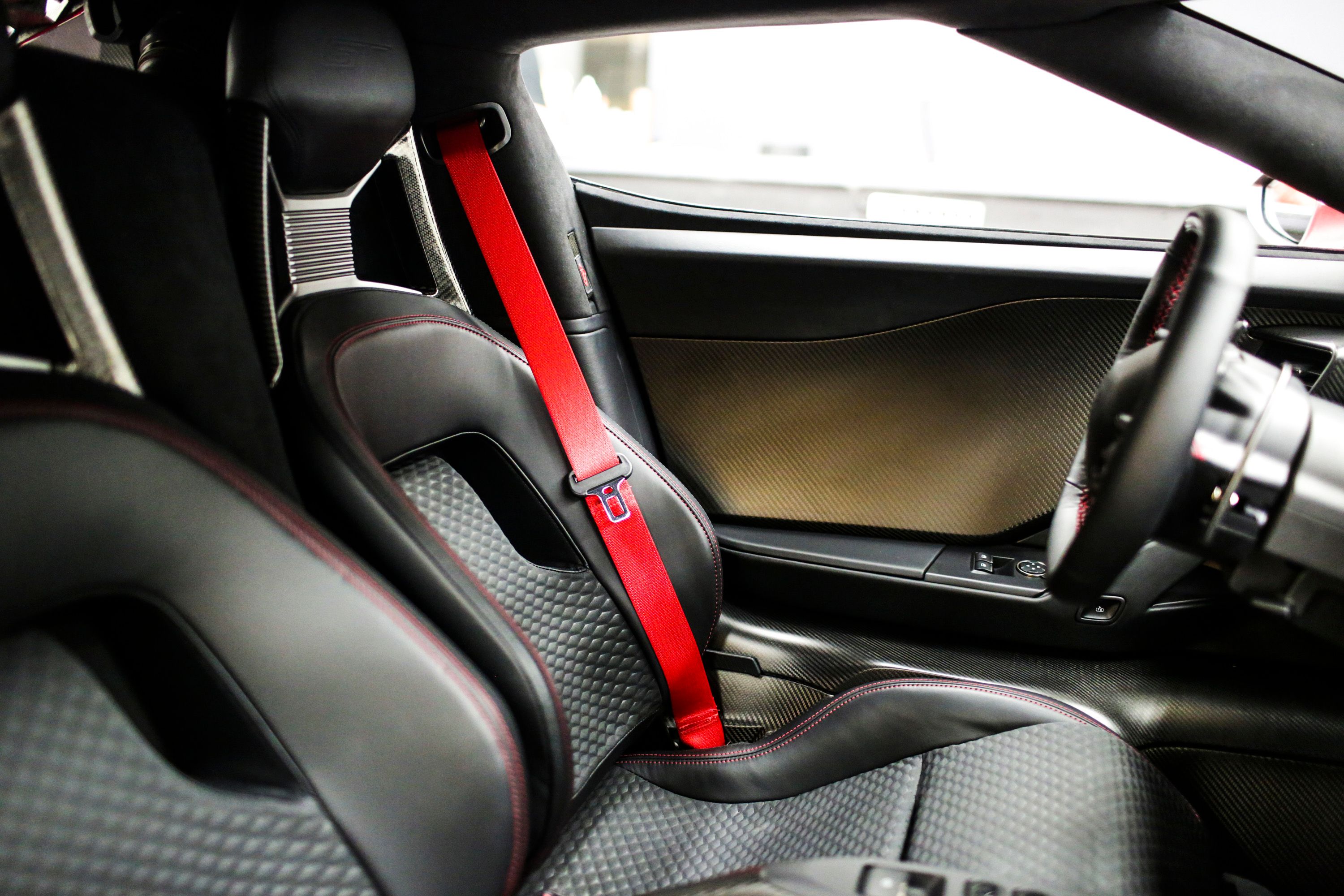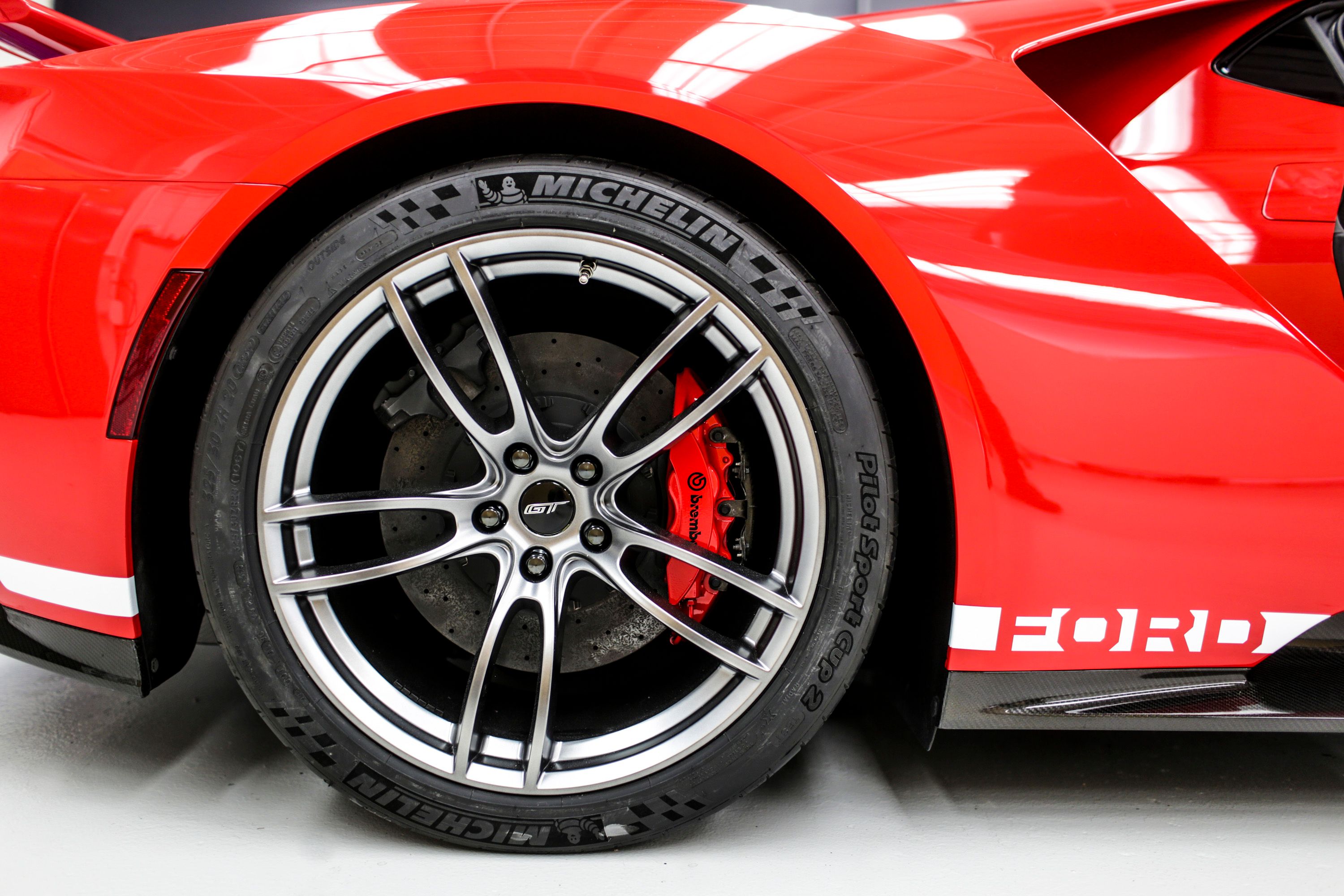It’s hard enough to get your hands on a Ford GT. The ultra exclusive model is sold out over the next four years, which just so happens to be the full life cycle of the supercar. All told, Ford only plans to build 1,000 examples of the GT, amounting to just 250 units per year. So yeah, getting a Ford GT this late in the game is next to impossible. Imagine what those odds will be then now that Ford has released a special livery for 2018 models of the Ford GT. Yup. I don’t like your chances any more than I like mine.
Ford’s new treat for future GT owners is called the ’67 Heritage Edition. If the name itself sounds familiar, that’s because Ford has already released something similar last year. Remember the ’66 Heritage Edition? It’s almost the same as the ’67 version in terms of where they’re inspired from, but in the end, they’re actually two different interpretations in part because the new version pays tribute to the 1967 Le Mans-winning Shelby-American Inc. team that featured racers AJ Foyt and Dan Gurney. Considering that Ford’s success in Le Mans with the original GT40 spanned four years, we could be in store for two more Heritage Editions in 2018 and 2019. For now, though, the spotlight is focused on the ’67 Heritage Edition and the way its treatment is inspired directly from the GT40s that took the checkered flag during the 1967 Le Mans season.
Continue after the jump to read the full story.
2018 Ford GT '67 Heritage Edition
- Make: Array
- Model: 2018 Ford GT '67 Heritage Edition
- Engine/Motor: V6
- Horsepower: 647 @ 6250
- Torque: 550 @ 5900
- Transmission: seven-speed DCT
- [do not use] Vehicle Model: Array
What makes the Ford GT ’67 Heritage Edition so special?
For the record, the Ford GT is special enough in its own skin. I think everybody agrees with that sentiment. It’s limited status alone already speaks to that, much more the fact that the car is based on arguably the most iconic Ford performance car in history, not counting the Mustang. So how do you make something that’s already special even more special? Well, you give it an exclusive livery.
This is the story of the Ford GT ’67 Heritage Edition. There are no aero mods or engine tunes to speak of, just a fancy dress-up that pays homage to the red-and-white 1967 Ford GT40 that won the 24 Hours of Le Mans that year.
|
Photo of the Le Mans-winning 1967 Ford GT40} |
In keeping with that spirit, the GT ’67 Heritage Edition is dressed up in a bright Race Red paint finish that’s offset by white striping that runs the entire length of the car, from the car’s nose all the way to the massive rear spoiler. Oval shields are also included bearing the number “1” on the hood and doors of the car. No surprises that this specific number was chosen because it’s the same number that was worn by the 1967 GT40 racer. Additional white accents on the fenders and doors, as well as the use of an exposed carbon package and a set of 20-inch aluminum wheels with a silver satin finish, complete the aesthetic look of the car’s exterior.
Ford’s exterior treatment of the ’67 Heritage Edition is a lot similar to the design of its predecessor, the ’66 Heritage Edition, in part because both liveries essentially paid homage to the same accomplishment: winning Le Mans.
The only difference is that the car that the 1966 GT40 race car featured a black paint finish with silver racing stripes. Hardly a surprise, then, that the GT ’66 Heritage Edition was dressed up in Shadow Black with silver racing stripes and a Frozen White No. 2 oval shield.
|
Ford GT '67 Heritage Edition |
Step inside the cabin of the Ford GT ’67 Heritage Edition and the use of red continues in the form of accent stitching on the predominantly black leather cabin. The seats are also made from carbon fiber now, same as the steering wheel. Then there’s the seat belt webbing, which also features a red shade, while the paddle shifters were treated to a nice gray finish. Take a closer look at the interior space and you’ll also notice satin stainless appliques on a number of sections inside the car and exposed carbon fiber on the center console, door sills, and air register pods. And just like the ’66 Heritage Edition, the ’67 version also gets a unique serialized identification plate that can properly identify the ’67 Heritage Edition for the special edition model that it is, as if the car itself isn’t special enough in its own right.
Since we’re here, might as well compare it to the interior of the ’66 Heritage Edition, right? Once more, similarities abound in the inspiration even if the treatment is different. Last year’s special edition Ford GT featured carbon fiber seats wrapped in Ebony leather with pillowed inserts and plod-through stitching. Likewise, the instrument panel, pillars, and headliner also came with Ebony leather wraps whereas gold was used as trim on the instrument panel, the seat’s X-brace and shift paddles. Exposed matte carbon fiber door sills and its own a serialized identification plate complete the interior upgrades of last year’s Heritage Edition model.
On the performance side, everything remains in stock condition so don’t expect any power upgrades to come from the ’67 Heritage Edition, just as they weren’t any on last year’s special edition model. That shouldn’t be an issue in the grand scheme of things considering that the Ford GT itself already packs a race-prepped 3.5-liter EcoBoost V-6 engine that pumps out 647 horsepower and 550 pound-feet of torque. All that power is sent to the two rear wheels courtesy of a seven-speed dual-clutch transmission. NO performance times have been announced, but the expectation is that the Ford GT can sprint from 0 to 60 mph in less than three seconds before zooming along to a top speed of 216 mph.
Ford hasn’t said how many of the ’67 Heritage Edition models it plans to offer to those with existing pre-orders of the Ford GT. Likewise, the cost of getting one of the Heritage Edition units has yet to be revealed, but considering that a “standard” Ford GT already costs $450,000 without any options, adding all these options could at least set a customer back at least another $50,000.
What can we expect from future Ford GT Heritage Edition models?
It’s an interesting question that now has more weight to it considering that Ford has released one for the second year in a row. If it continues this trend of creating a Heritage Edition Ford GT for each year of its dominant Le Mans run in the late 1960’s, we could be in store for two more of these beauties in 2018 and 2019.
Should that happen – big chance that it does now that Ford has tipped its hand – the ’68 and ’69 Heritage Edition models could feature different interpretations of the iconic Martini Racing livery that was used by the John Wyer Automotive Engineering racing team in the two years when it went back-to-back at Le Mans with the Ford GT40.
References
Read our full review on the 2017 Ford GT
Read our full review of the 2005 - 2006 Ford GT
Read our full review of the 1965 Ford GT40 Roadster
Read our full review of the 1964 - 1969 Ford GT40

















